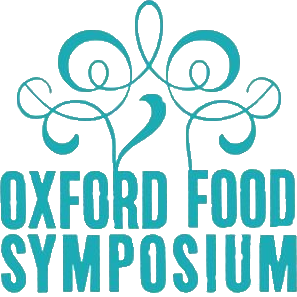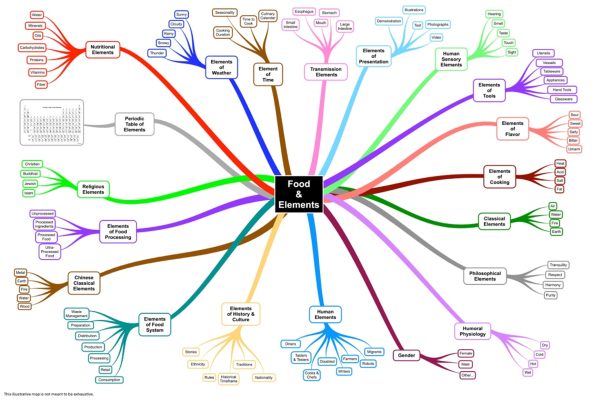
Summing up — thoughts from Nader Mehravari
How do you capture the essence of a gathering that spans continents, cultures, and centuries of culinary wisdom? At the 2025 Oxford Food Symposium, we tried — and discovered that the answer lies in the elements.
Not just the classical four — fire, water, earth, and air — but in the elements of flavor, of chemistry, of culture, of care. This year’s theme, “Food and the Elements,” invited us to explore the building blocks of our culinary world. What we found was a dazzling constellation of ideas, tastes, and transformations.
From One Kitchen to the World
Our closing speaker, Nader Mehravari, began his reflections not on a stage, but in his kitchen in Davis, California — a space alive with memory, science, and sensory delight. It was there, surrounded by the tools and ingredients of his own culinary life, that he first mapped out what “elements” meant to him: from proteins and acids to cookbooks and community.
But the Symposium expanded that map. What began as ten dimensions grew into dozens, each one sparked by a paper, a conversation, a meal, or a moment of shared insight. To make sense of it all, Nader created a mind map — a visual representation of the Symposium’s intellectual and emotional reach. It was a reminder that food is never just food. It is chemistry and culture, memory and method, ritual and resistance.

The Classical Elements: Fire, Water, Earth, Air
These ancient forces were everywhere — in papers, in meals, in metaphors:
- Fire ignited debates about tradition and technology. Should we abandon wood-fired ovens for induction cooktops? What does “The Death of Fire” mean for culinary heritage?
- Water flowed through Cambodian proverbs and molecular gastronomy, reminding us that it is both a medium and a message — a carrier of care, patience, and transformation.
- Earth grounded us in the Great Green Wall of Africa, in Algerian tagines, and in the soil that sustains us.
- Air lifted us into the world of foams, bubbles, and the invisible architecture of flavor.
These elements weren’t just discussed — they were tasted. Our guest chefs brought them to life in extraordinary meals: an Ecuadorian fire feast, an Algerian earth lunch, a Cambodian water dinner. Each dish was a story, each bite a revelation.
Beyond the Four: Chinese Elements, Periodic Tables, and Humors
The Symposium also explored other elemental systems:
- The Chinese Five Elements — Fire, Water, Earth, Wood, and Metal — were embodied in Japanese Zen temple cooking and the serene ritual of the tea ceremony.
- The Periodic Table became a playground of curiosity. We learned about edible gold, the role of calcium in nixtamalization, and even the cosmic origins of lithium. One paper asked: “Can I lick it?” — and brought a box of elements to prove the point.
- The Humors — Hot, Cold, Wet, Dry — were brought to life in a six-course meal designed by three young chefs and their mentor. It was a masterclass in care, creativity, and commensality. We ate blindfolded, mixed chaos salad tableside, and navigated dessert stations like culinary explorers.
The Elements of Flavor: Salt, Bitterness, Umami
Flavor itself became elemental:
- Salt appeared in Himalayan blends and Catalonian brining traditions — not just as a seasoning, but as a symbol of women’s culinary labor.
- Bitterness was explored as a ritual of trauma and resilience.
- Umami was the star of a keynote, a tasting experiment, and a French-Japanese film. We learned that plant-forward cuisine must also be flavor-forward — and that umami may be the key to both.

Moments That Moved Us
The Symposium was also filled with moments of humor, insight, and wonder:
- Marion Nestle asked, “Why market food by what it doesn’t include? How about asbestos-free eggs?”
- A Danish researcher nearly set off the Boston Fire Department while smoking cheese.
- A young chef compared her mentor’s feedback to “the torture of my childhood” — and everyone laughed.
- A paper on saffron grown in Stockholm challenged our ideas of terroir and authenticity.
- And after a chaotic lunch, someone whispered before a tea ceremony: “How interesting to follow the mayhem of the Chaos Salad with the tranquility of a Japanese tearoom.”
That, in a sentence, is the Oxford Food Symposium: a place where chaos and calm, science and poetry, tradition and innovation all sit at the same table.

A Global Gathering, A Shared Table
This year, we welcomed 238 attendees from 40 countries, including 75 first-timers and 30 students. We explored 28 food cultures, heard from four keynote speakers, and were nourished by the artistry of four chefs, along with our three Young Chefs. Behind the scenes, an extraordinary team of volunteers, organizers, and supporters made it all possible.
To all of you — thank you. You are the elements that make this Symposium what it is.
Your Homework: Map Your Culinary World
As Nader closed his reflections, he offered a simple invitation:
What are the elements of your own culinary world?
Is it your kitchen, your bookshelf, your garden, your grandmother’s stories? What are the tools, the tastes, the people, and the places that shape your relationship with food?
We invite you to take a moment to map your own dimensions. You might be surprised by what you discover.


